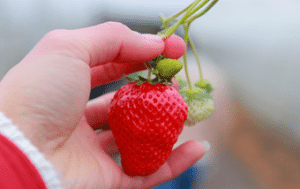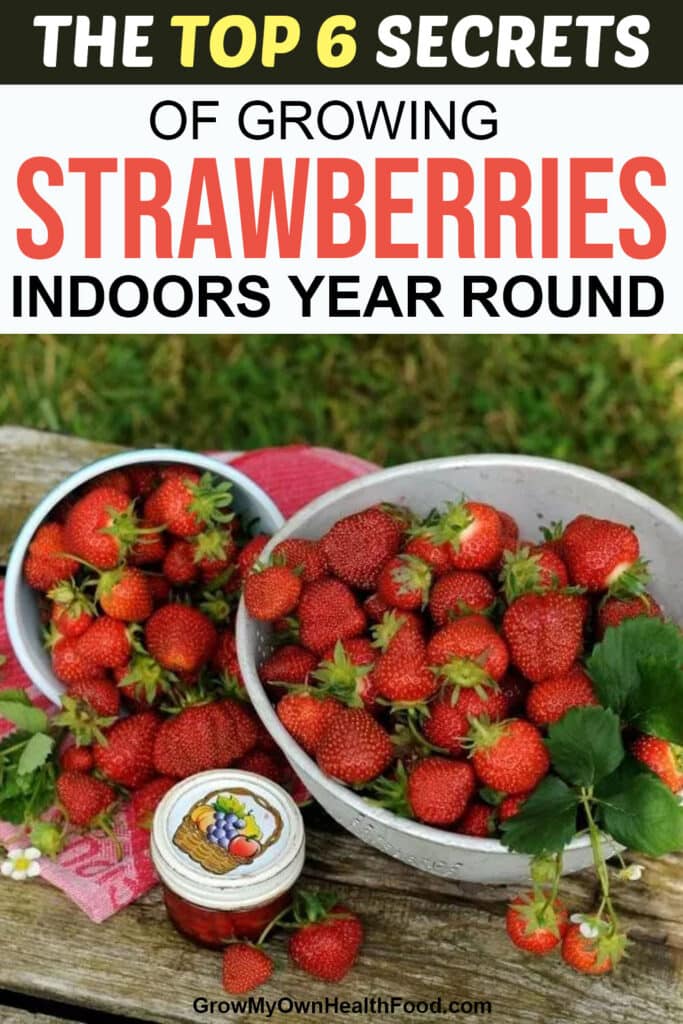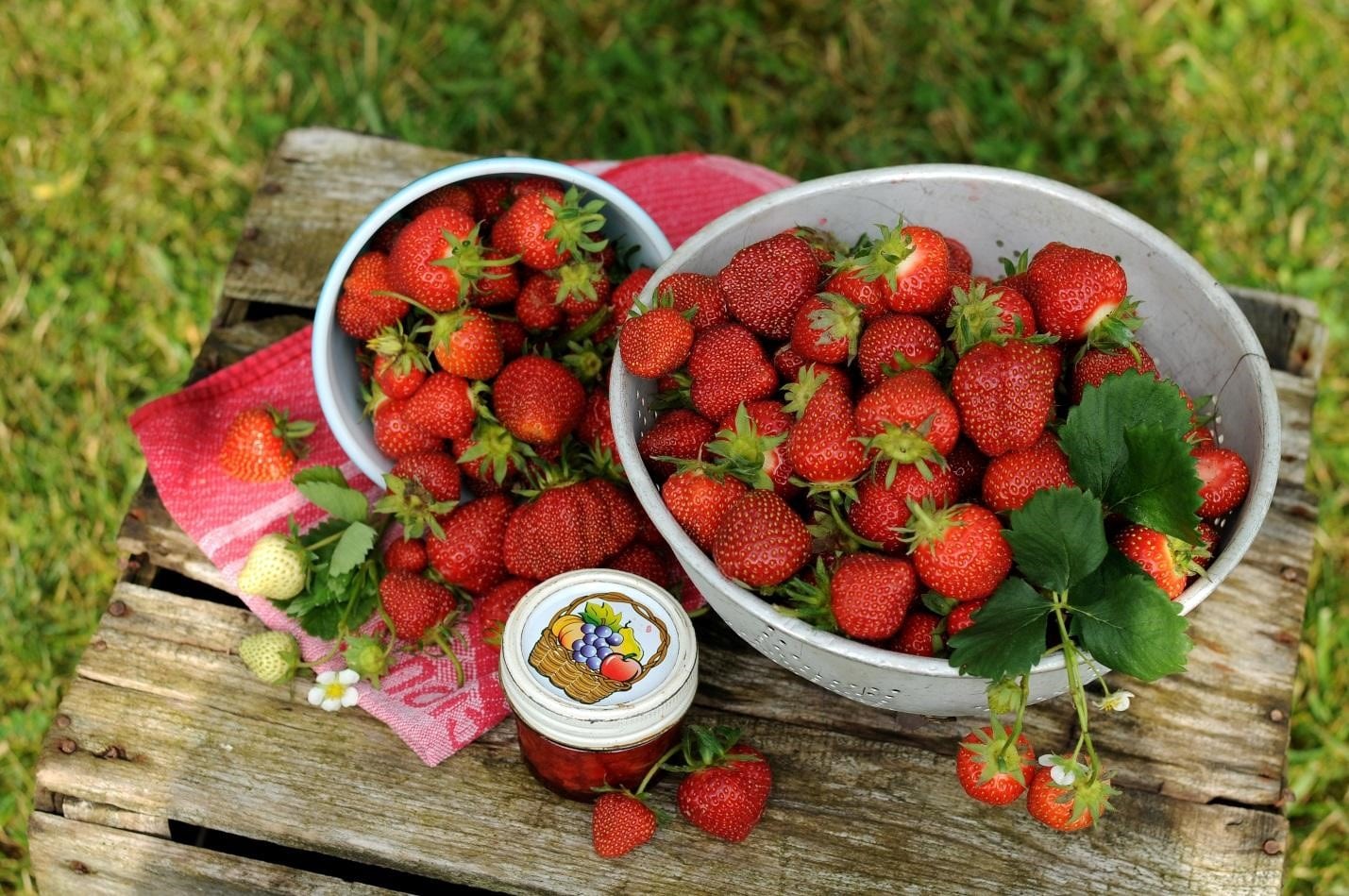What do strawberries and tennis have in common? Well, we’d sure like to know, considering that more than 28 tons worth of strawberries are consumed at Wimbledon every single year. Imagine growing that many strawberries indoors?
To be fair, 28,000 bottles of champagne, 7,000 liters of fresh cream, and 350,000 cups of tea and coffee are also consumed at the tennis event. So, that’s neither here nor there in the context of this article.
But, 28 tons of strawberries? That’s a lot if you think about it.
These sweet and decadent fruits have long been the subject of celebrated poets and medieval artistry. Today, no exquisite gourmet dessert would be complete without a strawberry-“something” in its ingredients. And, let’s not get started on chocolate-covered strawberries or strawberries and whipped cream… Yum!
But, there’s another side to their splendor. Strawberries don’t come cheap, especially if you’re buying them when they’re out of season.
Nonetheless, nothing is stopping you from growing them yourself. That’s right! You can grow them right there in your house or apartment, and delight in them all year round. No need for those pesky fields. Without further ado, here are the top 6 secrets of growing strawberries indoors.
1. Growing Strawberries Indoors 101 – Choose the Right Variety

Different strawberry varieties have different attributes that make them suitable for different uses. The variety you go with depends on the properties that matter the most to you.
The Honeoye variety, for instance, produces huge berries and offers a lot of resistance to soil-borne diseases. However, they aren’t as flavorful as you would expect – which is fine for the most part, especially if you intend to use them for jam. The sugar you’ll add compensates for this deficiency.
Varieties like Seascape, on the other hand, produce much smaller fruits in comparison, but their flavor is out of this world. One bite and you’re hooked. So, if you intend to nibble on them as a snack or use them in sweet desserts, these should be your go-to.
You also need to consider how different types grow. Outdoor varieties typically produce stolons. These are the runners that produce new strawberry plants. So, unless you intend to have a full-blown strawberry farm on your apartment balcony or back porch, you need to pick varieties that remain short and compact throughout their growth cycle. Alpine strawberries are perfect for this.
2. Hand Pollination Is Key
Here’s a little elementary school refresher. Any plant that produces fruit requires pollination. That’s how the fruits form. Pollination involves transferring pollen grains from the male part of a flower – the anther, to the stigma, which is the female part of it.
- Perfect accessory for maximizing yield of Pepper and Tomato plants
- Designed to distribute pollen evenly from flower to flower
- Increases yield by up to 300%
- Requires 2 AA batteries (not included)
Prices pulled from the Amazon Product Advertising API on:
Product prices and availability are accurate as of the date/time indicated and are subject to change. Any price and availability information displayed on [relevant Amazon Site(s), as applicable] at the time of purchase will apply to the purchase of this product.
Natural pollination is difficult to do when growing strawberries indoors. So, you’ll need to hand-pollinate them once the flower petals have fully opened.
One way to do it would be through a hand pollinator. Most of these devices operate using small batteries. Alternatively, you could use a soft brush to delicately brush the pollen from the anther to the stigma, and repeat this process for every flower.
3. Use a Proper Growing System

Simply because you’re growing strawberries indoors doesn’t mean you should skimp on the basic things that make plants, well… grow! You still have to provide suitable conditions for them to bear fruit.
One very crucial aspect you need to keep in mind is the growing and watering system. If this is your first rodeo, don’t go and buy a full-on hydroponic system. You could, but we recommend starting small since, let’s face it – growing your own food and planting strawberries is loads of fun, but it may not be for everyone.
So, begin with a vertical container that’s about 3 feet high and see how you like it. They’re usually quite affordable. A 4-5 tier model should suffice. Alternatively, a simple round pot or rectangular container will also do the job.
If you’re growing strawberry seedlings inside an enclosed room that doesn’t let in any natural sunlight, get a couple of LED grow-lights to create some artificial lighting. It works just as well as natural sunlight. However, if you can place them next to a sunny windowsill for them to get five to six hours of sunlight daily, even better.
4. Get the Right Kind of Soil for Planting Strawberries Indoors

Strawberries thrive in soil that’s slightly on the acidic side. The sweet spot is somewhere between a pH of 5.3 and 7.0. Use a test kit to find out what your soil’s pH level is.
Additionally, enriching the soil using dried horse or cow manure, humus, compost, and optimized NPK fertilizer goes a long way in making sure that you get the maximum yield possible. The brand of fertilizer you pick should have a high calcium and magnesium content in it. And, whatever you do, don’t over-fertilize!
5. Use an Optimum Amount of Water
Ideally, you want the soil to be moist, but not drenched. The amount of water required rests on the location of your strawberry plant. If your container is typically in a room that doesn’t have much air circulation or sunlight, you don’t have to water the plants often. Only do it if you find that one inch of the top-soil is dry.
If, on the other hand, you are growing indoors and your strawberry plant is situated near a window that lets in a lot of sun and air, then the soil is likely to dry out faster. So, you’ll need to water it more often. Morning is the best time to do it to give your plants a chance to drink up all that moisture goodness before most of it evaporates.
6. Use the Right Harvesting Techniques

Once the strawberry plant is ripe, red, and aromatic, pluck one of the strawberries and taste it. If it’s not as sweet as you expect it to be, there’s no harm in letting the entire batch ripen for a couple more days before harvesting them. Once they are harvested you can use this tool to prepare your strawberries.
Convenience Redefined
Growing strawberries indoors is a cheap and hassle-free way to get the freshest best-tasting fruits you’ll ever have in your entire life. Well, that may be a bit of a stretch, but you get the idea.
Start small to get the hang of it. Once you harvest your first two batches, experiment with different varieties until you find the one that you love. It’ll all be worth it in the end. Want more tips for growing your own healthy food? Sign up for our newsletter today to get the inside scoop on the latest gardening hacks. You’ll automatically be entered into our monthly giveaways!







